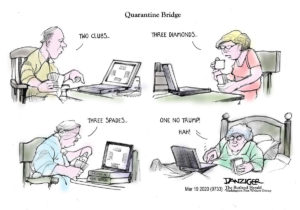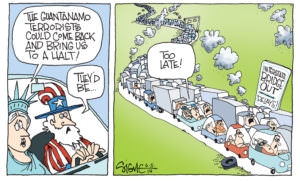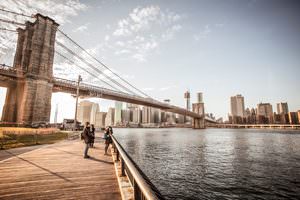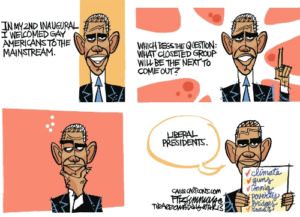Back to Basics
In a world filled with problems -- Iraq, terrorism and so on -- we tend to ignore the boring ones. Which is why, sadly, bridges will collapse and levees will break.WASHINGTON — How can such things happen? How can it be possible that one minute you’re driving home from work, or riding in a school bus with your friends, or heading to a baseball game, and the next minute you’re plummeting toward the Mississippi River as the bridge you’re crossing suddenly collapses?
How, for that matter, can you be hurrying through Manhattan near Grand Central Station and suddenly a subterranean steam pipe explodes, sending a geyser hundreds of feet into the air and leaving a crater in the street big enough to swallow a tow truck?
It’s easier to understand disasters if they have proximate causes — terrorism, earthquakes, tornadoes. It’s much harder to get your mind around what happened during rush hour Wednesday evening in Minneapolis, when a busy downtown bridge across the river simply … collapsed. As U.S. Transportation Secretary Mary Peters said at a news conference Thursday, in a pithy statement of the obvious, “Bridges in America should not fall down.”
They shouldn’t, but it’s quite possible that more of them will. We should also expect that more steam pipes will blow, that water mains will burst, that dams will develop worrisome cracks and that sooner or later, probably during a heat wave, much of the country will suffer a crippling blackout.
The heavily used Interstate 35W bridge that catastrophically failed, spilling dozens of cars into the Mississippi, had been rated just 50 out of 100 for structural integrity at its last inspection two years ago, according to the Associated Press. That wasn’t as much of a red flag as it seems in retrospect. Not for a moment did anyone believe there was any real danger of collapse, and the 40-year-old span wasn’t considered near the end of its useful life. The rating just meant that the bridge had structural deficiencies that at some point should be addressed — just like 27.1 percent of all the nation’s 590,750 bridges.
That estimate comes from the American Society of Civil Engineers, a trade group that every few years issues a report card on the nation’s aging infrastructure. The engineers’ most recent survey in 2005 gave the country an overall grade of D — and the reason for the low mark, as always, was that we don’t spend nearly what we should on maintenance and repair.
Bridges were actually deemed to be in better shape than dams, roads or the power grid. But the civil engineers estimated that it would cost $9.4 billion a year for 20 years “to eliminate all bridge deficiencies.”
That’s not a lot of money in the context of a $13-trillion economy. But does anyone think we’re going to make infrastructure a national crusade? Have the presidential candidates been falling over themselves to stake out their positions on the oh-so-sexy infrastructure issue?
Of course not. Infrastructure is boring. Anyone who has ever owned a house knows that every once in a while you have to replace the gutters, buy a new furnace, waterproof the basement or insulate the attic. But the tendency is to spend the money on a new flat-panel TV and let the infrastructure slide — until something breaks, floods or falls down. At that point, of course, the repair will cost twice as much as if you’d done it sooner.
In the case of a deficient bridge or dam, the added cost may come in human life. But given the restraints that entitlements and debt service impose on government spending, given the astronomical cost of the war in Iraq and given the urgency of problems such as healthcare and education, it’s inevitable that technically deficient structures will go longer than they should without being repaired or replaced.
There are more than 160,000 “structurally deficient or functionally obsolete” bridges in the United States, according to the civil engineers’ 2005 report. Of those deficient or obsolete bridges, 43,189 are in urban areas. There is no reason to think any particular one is about to collapse the way the bridge in Minneapolis did. But now we know that the theoretical possibility of sudden, catastrophic failure is real.
It’s unrealistic to think this disaster is going to spur the nation to seriously address all its infrastructure problems. We’ll talk about the issue for a while, then go out and buy another TV. But we can — and should — at least do a more rigorous inventory and identify the structures that pose the most peril. Yes, it’s boring stuff to even think about. But just look at the alternative.
Eugene Robinson’s e-mail address is eugenerobinson(at)washpost.com.
© 2007, Washington Post Writers Group
Your support matters…Independent journalism is under threat and overshadowed by heavily funded mainstream media.
You can help level the playing field. Become a member.
Your tax-deductible contribution keeps us digging beneath the headlines to give you thought-provoking, investigative reporting and analysis that unearths what's really happening- without compromise.
Give today to support our courageous, independent journalists.




You need to be a supporter to comment.
There are currently no responses to this article.
Be the first to respond.